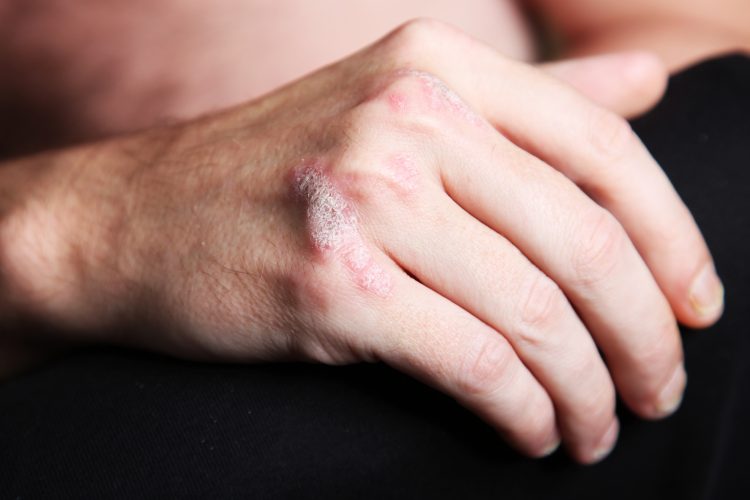Largest psoriasis meta-analysis to date yields new genetic clues
Posted: 24 May 2017 | Niamh Marriott (Drug Target Review) | No comments yet
1-2% of the US population have psoriasis, an immune-mediated disease that causes red, patchy and scaly marks on the skin.


A new study builds on the genetic architecture of psoriasis, the next step toward answering what in the genes causes the disease. University of Michigan researchers, working with partners across the globe. It’s the most recent publication in long-standing psoriasis work at U-M.
“We know there are a lot of genes, each with a relatively small effect, in play. Those genes combined with the environment lead people to develop psoriasis,”
says senior author James Elder, M.D., Ph.D., professor of dermatology at the U-M Medical School. “This study identified 16 more genetic markers, bringing the total to 63 loci linked to psoriasis.”
Elder’s team ran genome-wide tests, comparing frequencies of genetic variants of people with psoriasis to those of control subjects. They examined data from eight different cohorts, with a total effective sample size of more than 39,000.
“This is by far the largest psoriasis meta-analysis to date in terms of sample size,” says first author Alex Tsoi, Ph.D., a research assistant professor in dermatology, biostatistics and computational medicine and bioinformatics at the U-M Medical School. “We’ve been able to pinpoint pathways related to the disease as well as pointing to the right directions for the gene targets.”
Zooming in
Elder’s team focused in on the loci they have identified, to learn more about them.
Two pathways of note that are very important to the study of psoriasis include the IL-23 and HLA genes, Elder says. Many current therapies target IL-23 as well as IL-17, a cytokine that is produced in response to IL-23.
HLA “is by far the biggest genetic signal of psoriasis,” Elder says. “We see through the nerve center of the immune system that the structure is more complicated than ever suspected.” In fact, that region of genes includes seven different signals of psoriasis.
But even the largest psoriasis study so far doesn’t turn up the data required to determine every genetic variant at play.
“We still haven’t found more than half of what’s genetic about psoriasis,” Elder says. “Some of the differences are so subtle that we’d need to study hundreds of thousands of subjects.”
Many samples, one population
The new study focused on subjects of European origin. Thanks to great partnerships across the globe, Elder says, other studies are investigating additional populations with psoriasis, including in India and China.
“Researchers are focusing on individual populations for each study, in order to understand the particulars of that population’s genetic backgrounds,” he says.
The work includes data from specialist-diagnosed psoriasis as well as self-reported, via the consumer genetics company 23andMe, one of the study collaborators. Researchers discovered some consumers might assume they have psoriasis without getting a formal diagnosis.
“There was some misclassification when the diagnosis was not from a dermatologist, and we estimated close to 4% of unaffected individuals thought they had psoriasis but they must have had something else,” Tsoi says.
Once researchers adjusted for the false positives using a statistical approach, the self-reported cohort helped to not only identify the 16 new loci, but also confirm the others previously found.
“Adding that chunk of data really gave us power to see more signals than we had seen in the past,” Elder says.
Working toward improved treatments
Although medications for psoriasis have come a long way over the years, Elder says only about 5 percent of the genes found so far are targeted by existing medications. Another issue in psoriasis treatment is high price tags for drugs, he adds.
“Better treatments will come out of understanding these other untouched genes,” Elder says
Related topics
Gene testing, Gene Therapy, Genetic analysis, Genomics
Related conditions
Psoriasis
Related organisations
Michigan University
Related people
Alex Tsoi, James Elder



